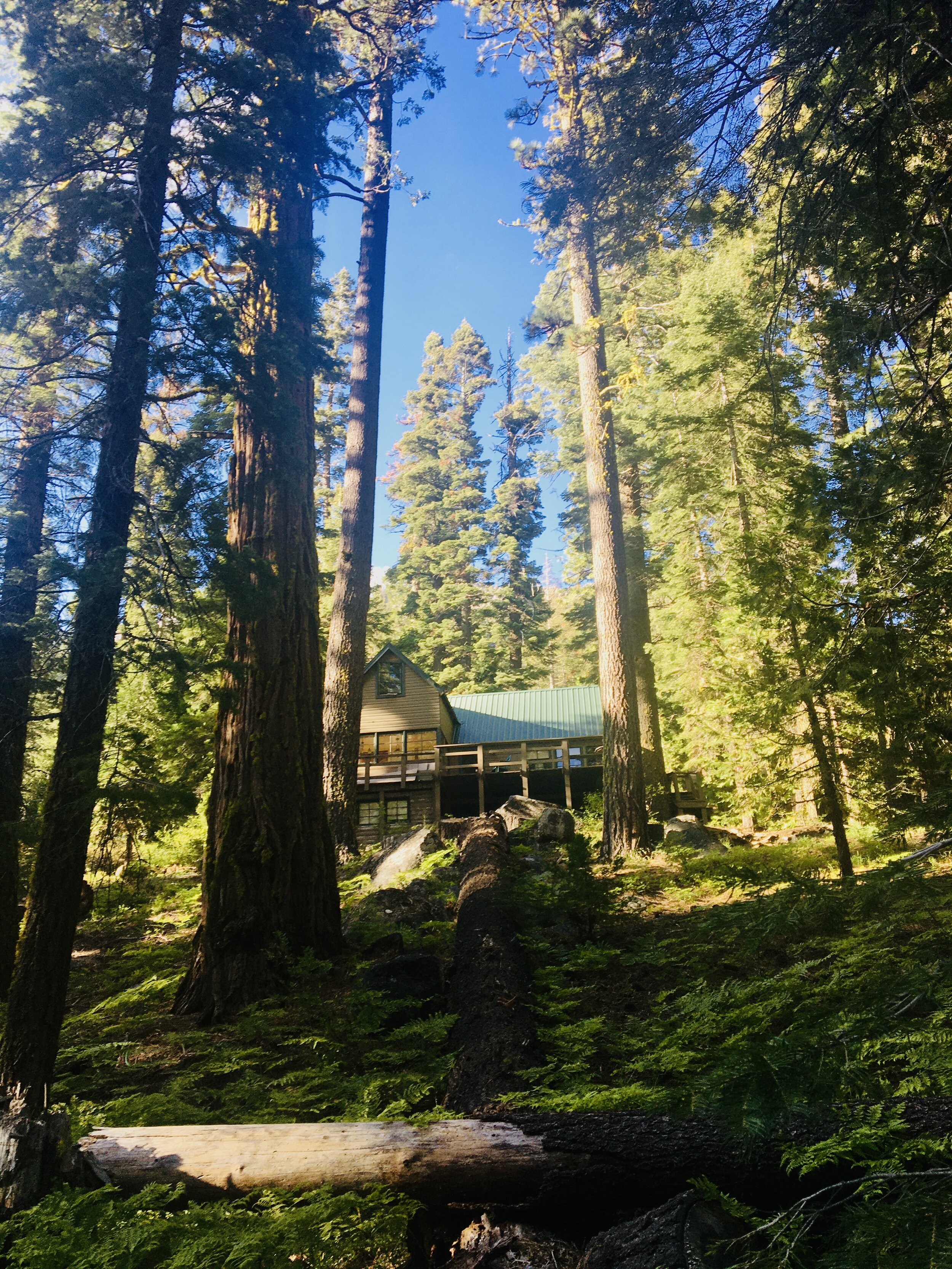Edge of Disaster
Now I join the legions of fellow humans around the earth as I watch, in helpless anguish, as perhaps the most cherished treasure of my heart seems doomed to destruction by wildfire.
It’s just a little cabin, a humble forest-service lease cabin, not my home nor a member of my family, nor an entire village, nor a country collapsing. And, as of yet, it still stands, though fingers of the Caldor fire reach over the firefighters’ breaks and at any moment a stray ember could take it.
As tiny and rickety as it is, this little cabin has taught me almost everything. It has nourished my imagination, taught me the value of work, of family, of simple meals cooked on an outdoor grill, of having to care for a place in order for it to be there for you. I have lived many places in this world, and though I have never spent a full year in this house, to me it rings the deepest resonance of home. My grandfather, who I remember fondly, and my great-grandfather, who I never knew, built it over 80 years ago—five generations of my family have spent summers lounging in the river and winters skiing the nearby slopes. It may seem a silly thing to say about a recreational place, but I feel an almost sacred bond with that little building, the rocks and trees and river bed around it.
My uncle, who has worked over 40 years for CalFire, and is now, I know, pulling down heaven and earth to stop or redirect this fire, told me many years ago about the dreadful state of the forests around our place. “It’s not a matter of ‘if,’” he’d say, “but ‘when’”. From him, I learned long ago about the benefit of prescribed burns—decades before they became known to the public. From him, I learned to see how sickly our forest really was—for all the trees seemed to sing in the wind to me. When I was seven or ten, I could walk barefoot cutting across a bend in the river that took me to the most wondrous of swimming holes—a clear, sandy-bottomed pool often over 5-6 feet deep, with a gushing rapid pouring into it, which we could float into the turquoise waters. But, for the past decade that little path is overgrown with alder thickets and feet-deep crackling downed branches nearly impossible to traverse. That is the kindling fueling this fire.
One evening, maybe a decade ago now, I was caught by surprise to witness a wonderful thing. An incredibly tall flower, taller than I, was blooming, surrounded by bumblebees whose greedy quest for nectar actually pushed the white, lily-shaped buds open as I watched. The next morning, I went to show these flowers to my daughters, but they had closed up. They only bloomed in the evening twilight, I learned from observation. I took to pouring myself a glass of wine in the evening and pulling up a folding chair to watch the nightly love fest of bumblebee and blossom. With a little research, I learned they’re soaproot plants, a vital plant for Native Californians, who cultivated it. Looking around, I realized that there, by “our” woodpile, was a veritable garden patch of soaproot, a dozen or more that bloom every July. Nearby, too, were a couple of scraggly oak trees, no doubt longing for more sunlight, and probably fire, which may have been descendants of much larger trees supplying the Californian staple food. The Volvo-sized granite boulder we used to play pirate ship on was a perfect, sunny vantage point for ancient mothers to keep an eye on their children from, though lacking acorn-grinding depressions that I’ve seen on boulders in the area. These families would have regularly burned the grasses and underbrush throughout the forest around what has become our cabin, encouraging beneficial plants, and protecting it from the raging crown fires that now ravage the entire state of California. After my eyes were opened by soaproot, I became increasingly conscious of the staggering, catastrophic neglect my people have visited upon these young forests over the last century. If we had set out intentionally to create the conditions for mass conflagration, I don’t know how we might have done worse than what we’ve created through our misguided notions of forestry.
These observations remind me of the vast, almost unfathomable losses that precede my own anticipated one. My five generations pale in comparison to the thousands of years in which the Sierra Miwok inhabited and cared for that place. At the same time, however slender that connection is, it allows me to feel a piece of that grief of my fellow humans.
When these fires still, and they will eventually, how shall we learn anew from them, if we even can? Our generation has reaped the whirlwind—both the wealth and the delayed debt of our ancestor’s arrogance and greed. Can we emerge from these ashes with a humbled sense of our own limitations, and maybe take on a sense of responsibility and care for the land that sustains us?
